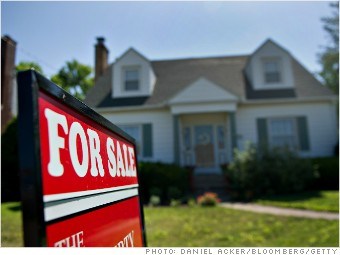Great strides have been made toward ending discrimination in housing since passage of the Fair Housing Act in 1968. Unfortunately, discrimination continues, often in subtle forms. I’m proud to announce that today HUD took an important step forward in our continuing efforts to expose and end discrimination in housing, through the issuance of a rule that formalizes a national standard for determining whether a housing practice violates the Fair Housing law based on an unjustified discriminatory effect.
As we’ve learned over the years, housing discrimination comes in many forms. Discrimination doesn’t have to be intentional in order to have a damaging effect. And it doesn’t have to be explicit in order to create, increase, reinforce or perpetuate segregated housing patterns because of race, color, religion, sex, handicap, familial status, or national origin as the law prohibits.
HUD, which has the responsibility and authority to interpret and enforce the Fair Housing Act, has long interpreted the Act to prohibit housing practices with an unjustified discriminatory effect, if those acts actually or predictably result in a disparate impact on a group of persons, or create, increase, reinforce or perpetuate segregated housing patterns.
Indeed, this well-established legal precedent has been critically important in helping HUD remedy discriminatory practices in home rentals, sales, and financing nationwide. The rule released today reaffirms and formalizes this existing legal framework of the Fair Housing Act.
I’m pleased not only that we have adopted this rule, but also that it was accomplished through a transparent and inclusive process. For more than a year, HUD sought, received, and incorporated input based on comments from individuals, fair housing and legal aid organizations, Attorneys General, state housing finance agencies, public housing agencies, public housing trade associations, insurance companies, financial institutions, and numerous other entities. It was a process that gives us confidence in this rule as a source of clarity and consistency for individuals, businesses, organizations, and government entities in understanding their responsibilities under, and compliance with the law.
Read the final rule.
 Many of these residents were residents of the original Rosedale Community that was destroyed by the storms of April 2011. They could tell you stories of that terrifying day, when lives hung in the balance and nothing short of a miracle kept so many residents from harm. Anyone looking at the rubble in the days after the storms knew what a miracle it was that so few lives were lost. But those days were also the beginning of a long, long road to recovery. Former residents will tell you how they drove or walked by the construction site almost daily to see the progress, to dream of the day when they could return to the community that some had called home for decades. Continue reading
Many of these residents were residents of the original Rosedale Community that was destroyed by the storms of April 2011. They could tell you stories of that terrifying day, when lives hung in the balance and nothing short of a miracle kept so many residents from harm. Anyone looking at the rubble in the days after the storms knew what a miracle it was that so few lives were lost. But those days were also the beginning of a long, long road to recovery. Former residents will tell you how they drove or walked by the construction site almost daily to see the progress, to dream of the day when they could return to the community that some had called home for decades. Continue reading 

 Atlanta chose to invest in the Edgewood community by developing the Retreat at Edgewood. The Retreat at Edgewood sits on the former site of Edgewood Housing Apartments that was vacant for two years before it was demolished in 2008. The Edgewood neighborhood is predominantly a residential community that is close in proximity to the downtown area, conveniently located near Interstate 20 and accessible to MARTA transportation lines. As the community gentrifies, property values are rising, making quality affordable housing rare.
Atlanta chose to invest in the Edgewood community by developing the Retreat at Edgewood. The Retreat at Edgewood sits on the former site of Edgewood Housing Apartments that was vacant for two years before it was demolished in 2008. The Edgewood neighborhood is predominantly a residential community that is close in proximity to the downtown area, conveniently located near Interstate 20 and accessible to MARTA transportation lines. As the community gentrifies, property values are rising, making quality affordable housing rare.
Connect with HUD